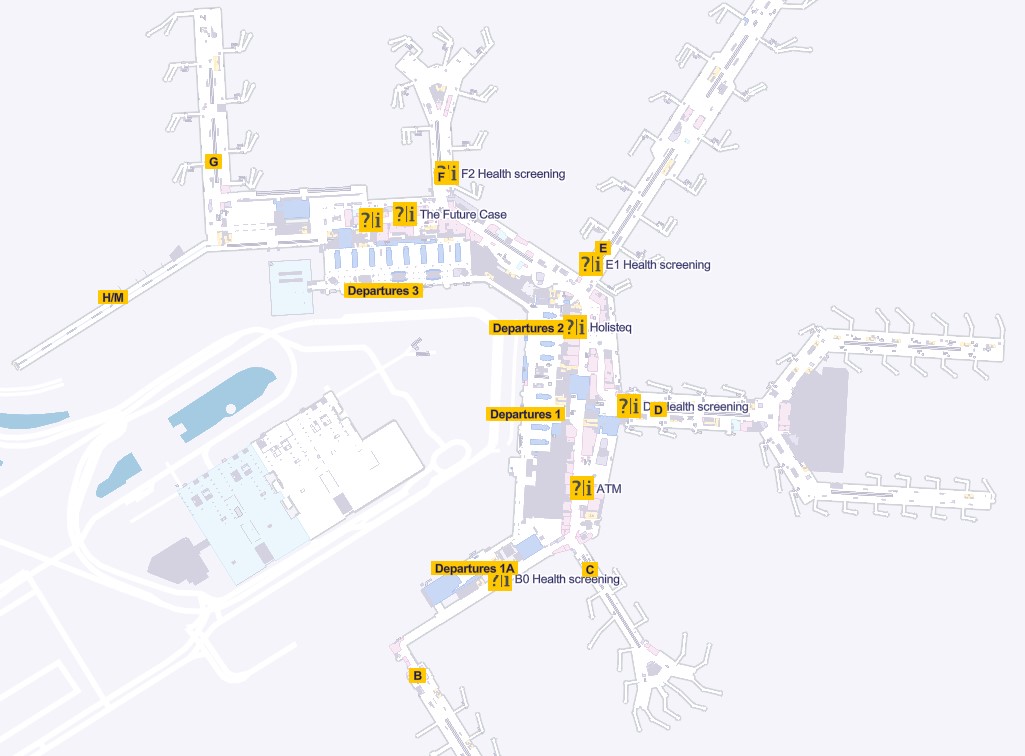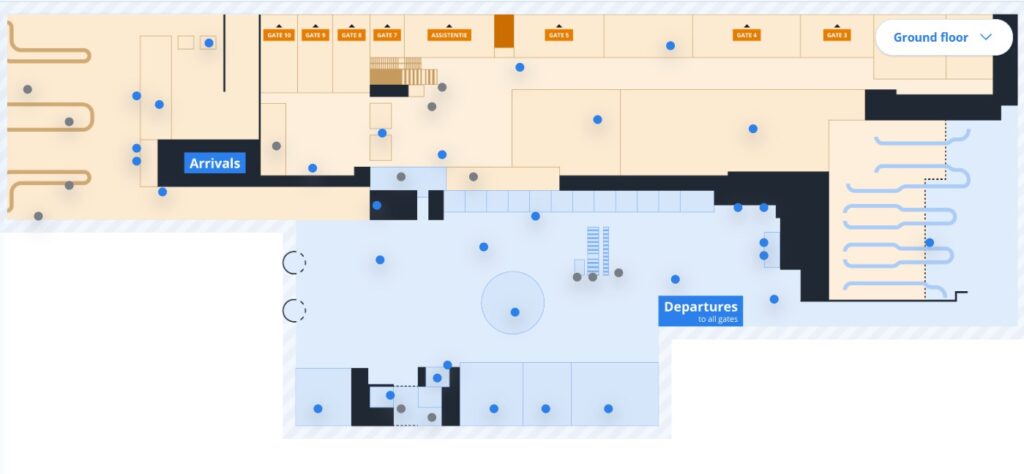Tucked in the heart of Europe, this small yet influential nation boasts an impressive array of airports that efficiently bridge it to the rest of the continent and the world beyond. Whether you’re a tourist eager to explore the artistic streets of Amsterdam, an expat beginning a new journey, or a student diving into the rich academic history of the Dutch, understanding the country’s airports will undoubtedly aid in your travels.
This article serves as an English resource, offering an informative and practical guide to airports in The Netherlands, ensuring you navigate your journey with ease and confidence.
Key Takeaways
- The Netherlands boasts several major airports, with Schiphol being Europe’s pivotal hub.
- Dutch airports provide extensive amenities and are English-friendly for global travelers.
- The country’s airports offer excellent transportation links, ensuring easy city access.
- Shopping at Dutch airports allows travelers to grab unique souvenirs like stroopwafels.
- Internal flights in the Netherlands can be time-efficient for certain long-distance routes.
Major Airports in The Netherlands
The Netherlands, while compact, has a number of international and regional airports catering to a variety of destinations. Each airport is uniquely positioned to serve various parts of the country, ensuring swift connections and travel routes for all.
| Airport | Key Features | Navigational Tips |
| Amsterdam Airport Schiphol (AMS) | Europe’s major hub, global connectivity | Look for clear English signs and explore the in-house museum during layovers. |
| Eindhoven Airport (EIN) | Keep documents handy, and use buses/taxis for swift city connections. | Arrive earlier during peak times; consider taking a train to northern cities. |
| Rotterdam The Hague Airport (RTM) | Serves Rotterdam & The Hague, European business hubs. | Keep documents handy, use buses/taxis for swift city connections. |
Here’s a closer look at some of the primary aviation hubs you might encounter:
Amsterdam Airport Schiphol (AMS)

Nestled just a short distance from the vibrant city of Amsterdam, Schiphol stands as one of Europe’s busiest and most pivotal airports. It’s not just an entry point to the Netherlands but a significant European transit hub.
Schiphol boasts direct flights to a myriad of global destinations. Its vast network ensures that travelers can easily hop on to other European cities or catch long-haul flights to distant continents.
Tips for navigating the airport:
- Schiphol’s single-terminal design, albeit massive, offers a relatively straightforward navigation experience. Keep an eye out for clear English signs and digital boards.
- If you have a layover or some time to kill, explore the airport’s in-house museum or relax at one of its serene airport lounges.
- Use Schiphol’s interactive map here.
Eindhoven Airport (EIN)

Serving as the secondary international gateway, Eindhoven Airport primarily caters to low-cost carriers and destinations within Europe. It’s an excellent option for those venturing to the southern parts of the Netherlands or seeking budget-friendly travel options.
Major routes served: Numerous European cities, from London to Barcelona, often at competitive rates, making it a favorite among budget travelers.
Tips for efficient travel:
- The airport, smaller than Schiphol, offers a more relaxed travel experience. However, during peak times, it’s advisable to arrive a little earlier than usual due to its popularity with low-cost carriers.
- For those seeking to reach Amsterdam or other northern parts, consider the reliable train service connecting Eindhoven city to the rest of the Netherlands.
- Make use of their map here.
Rotterdam The Hague Airport (RTM)
Strategically positioned to serve both Rotterdam and The Hague airport is a convenient choice for travelers heading to these cities or their surrounding areas.
Main routes catered to: Predominantly European destinations, with an emphasis on business hubs given its proximity to The Hague, the international city of peace and justice.
Navigating tips:
- While it’s one of the more tranquil airports, it’s still advisable to keep your travel documents handy and accessible. The compact nature of RTM ensures quick check-in and boarding processes.
- Ground transportation is abundant, with excellent connections to Rotterdam and The Hague via buses and taxis.
Other Notable Airports
Other significant, though smaller, airports include Groningen Eelde Airport (GRQ) in the north and Maastricht Aachen Airport (MST) in the south. Both serve select European destinations and can be ideal entry or exit points if they align with your travel plans.
Travel Tips: Navigating Dutch Airports
Dutch airports, characterized by their efficiency and traveler-friendly amenities, still present certain nuances that can be beneficial for first-time visitors to know. Whether it’s your maiden voyage to the Netherlands or you’re a seasoned traveler, these practical tips aim to ensure a seamless airport experience.
Language Tips
Common Dutch phrases to know: While the Dutch are commendably proficient in English, especially at airports, it can be heartwarming and respectful to know a few phrases. “Dank je” (Thank you), “Goedemorgen” (Good morning), and “Waar is…” (Where is…) can be particularly handy.
Importance of English in Dutch airports: Rest assured, all signages, announcements, and information boards in major Dutch airports are available in English. Most airport staff are bilingual, if not multilingual, and are always ready to assist.
Transportation to/from Airports
Airport train connections: Especially prominent at Schiphol, the Netherlands boasts excellent train connections directly from the airport. These trains, operated by NS (Dutch Railways), can swiftly get you to major cities like Amsterdam, Rotterdam, or Utrecht.
Taxi and ride-sharing tips: While taxis are readily available outside all major airports, they can be on the pricier side. Consider using ride-sharing apps like Uber for a potentially more cost-effective option. Always ensure you’re using official and recognized transport services for safety.
Bus and tram connections: Many Dutch airports, including Eindhoven and Rotterdam The Hague, are well-served by local buses and, in some cases, trams. These can be a cost-effective way to reach city centers or specific neighborhoods.
Duty-Free & Shopping
Overview of duty-free allowances: If you’re departing from a Dutch airport to a non-EU destination, you can take advantage of duty-free shopping. Limits apply depending on your destination, so it’s worth checking these in advance.
Popular items to look for: Dutch cheeses, stroopwafels (caramel-filled waffles), and Delftware (iconic blue and white ceramics) are among the unique items you might want to pick up as souvenirs or gifts.
Dining Options
What to expect in terms of food: Dutch airports offer a mix of international cuisine and local delicacies. From quick sandwich kiosks to sit-down restaurants, there’s a variety to cater to different preferences and time constraints.
Recommendations for quick bites: Keep an eye out for “broodje” (sandwich) stalls that offer delicious fillings like herring or cheese. Also, indulge in a “kroket” from an automat or try some “bitterballen” if you find them on a menu.
Pros and Cons of Flying Internally in the Netherlands
Given the compact nature of the Netherlands, the prospect of domestic flights might seem unusual to some. However, there are situations where such an option might be on the table. Here are some of the pros of opting for internal flights in the Netherlands:
Efficiency Over Distance
While the Netherlands is geographically small, certain routes, especially those that span from the extreme north to the deep south (e.g., from Groningen to Maastricht), can be more time-efficient when covered by air, especially if time is of the essence.
Airport Amenities
Dutch airports are well-equipped with modern amenities. Those choosing to fly internally can enjoy the comfort of lounges, a variety of dining options, and sometimes quicker security checks than at larger international hubs.
Weather Considerations
In instances of extreme weather conditions, which might impact road or rail travel, flights can sometimes offer a more reliable alternative, as airports have robust infrastructures in place for weather challenges.
Special Deals and Loyalty Programs
For travelers who frequently fly with specific carriers, leveraging loyalty programs or availing of special deals can sometimes make internal flights financially competitive compared to other forms of transport.
Scenic Views
Flying offers a unique perspective on the Netherlands’ varied landscape. From the lush green meadows crisscrossed with canals to the urban sprawls, it’s a sight to behold, albeit briefly, when taking off or landing.
Opting for internal flights in the Netherlands can certainly have its benefits, but it’s also important to weigh the cons. The decision ultimately rests on personal preferences, specific circumstances, and itinerary demands. Safe travels!